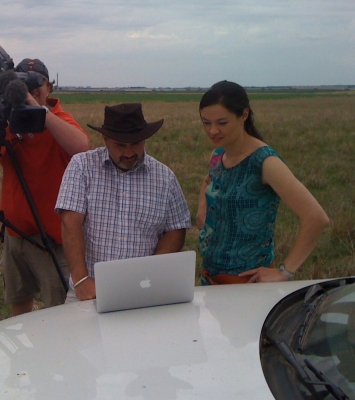Thunderstorm Asthma - Deakin research featured on Catalyst
Research news
Deakin University's Associate Professor Cenk Suphioglu has been featured on ABC TV's Catalyst program.
The story presented by Tanya Ha looked at the distress of many Melburnians in November last year when an asthma thunderstorm struck the city, bringing in ryegrass pollens.
"Melbourne is particularly a hotspot for this because when these pollens are being released, are picked up by northerly winds and all of the growth is in the northern parts of Vic, and the northerly winds pick them up and bring them into the metropolitan area where most of us are, and then you have the perfect model system for thunderstorm induced asthma," said Associate Professor Suphioglu, the Head of Deakin's NeuroAllergy Research Laboratory (NARL).
During a thunderstorm, half a tonne of pollen per hectare can take flight. But while it may inflict hay-fever in urban areas, something else is needed to trigger thunderstorm asthma.
"Pollen itself, even though we don't see it with the naked eye is too large to penetrate the lower airways, so it actually gets trapped in the epiglottis," Professor Suphioglu said.
"So for something to penetrate the lower airways, to cause asthma, you need smaller, micronic particles, less than five microns in diameter."
Share this story
 Associate Professor Cenk Suphioglu
Associate Professor Cenk Suphioglu
